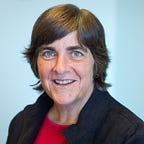Picking Up Where I Left Off, Beginning with Ecuador
It’s been three years since I’ve indulged my hobby of traveling to low- and middle-income countries offering short-courses and workshops. Like everything else, my instructional odyssey was put on hold for the pandemic. I did offer two “COVID edition” virtual data science short-courses for students at institutions I’d previously visited — in Peru and the Philippines — but it’s not the same.
I’d had big plans for travel-teaching in the summer of 2020: Ecuador, Colombia, Nepal, and a third visit to Bhutan. Fortunately, my hosts in both Ecuador and Colombia were still available and eager, so we just dusted off our previous plans. My hosts in Nepal have been difficult to reach, and Bhutan is still closed (or more accurately, requires a quarantine I’m not eager to endure). And in newly hatched plans, I’ll visit Monterrey, Mexico in September, and it’s looking good for Mongolia in summer 2023; with luck, by then Bhutan will be open as well.
My teaching in Ecuador was hosted by Universidad de las Américas (UDLA, pronounced “ood-la”), a relatively small and seemingly well-funded private university serving students from Quito and beyond. I was teaching at one of their three campuses — a set of modern buildings with views over Quito.
Based on my previous teaching experiences in Latin America (Medellin, Colombia; Valparaiso, Chile; and Arequipa and Lima, Peru) I feared English might be a bit of a challenge. A few participants had excellent English skills and most seemed to understand well enough; speaking was somewhat more difficult. Also similar to other Latin American countries was a dearth of women: Among the 40 participants in the data science short-course, only 4 were women. The university is highly aware of the issue and would like to do better, but with students choosing their major when applying, and admissions based entirely on an entrance exam, it’s an uphill battle.
Although I’ve been been using selected material from the data science short-course here and there at Stanford, much of it has been sitting dormant for three years. I didn’t have time to check it over in advance, so there was definitely some winging-it as I taught, with a few surprises when software platforms I rely on had made some subtle changes. The students didn’t seem to mind that I needed to make a few adjustments on the spot, and there were no disasters. I did some cleanup work in the evenings, and I should be good to go for my next few stops.
When I designed my design-thinking workshop many years ago I created a comprehensive set of scripts and materials, and there’s more flexibility and fluidity than with data science (and no software platforms!), so jumping back in was pretty seamless. On the other hand, the concepts can be subtle to explain, so I worried a little bit about the language barrier. No need: the students were engaged and came up with great projects. In the final debrief they were able to communicate what they felt they learned, which exactly matched the goals of the one-day workshop. (Their design challenge for the day was to improve local transportation, which is one of the most popular choices. I must say what I learned about reliability and safety of the public busses in Quito was rather discouraging.)
I wasn’t quite sure what to expect in terms of pandemic precautions. Overall, Ecuador seems to have higher face-covering usage than in the Bay Area (and certainly than the USA in general), and I never felt uncomfortable, with one exception: At the conclusions of the data science short-course and the design thinking workshop, the participants were incredibly excited and grateful, which reminded me why I do this. But as is also frequently the case, there was an endless photo session. The students were hopeful of unmasked photos, but as the selfie line grew I decided to go the cautious route.
On the personal side, I found the week to be extraordinarily busy — more than I remember from the past. As soon as the day’s teaching was done I hunkered down with a takeout dinner, working until late in the evening on the teaching materials and trying to keep up with my dean duties at home. On the other hand, I never missed my morning run, with Parque La Carolina near my hotel being an excellent venue once I adjusted to the 9,350' altitude. On my last day of teaching I finally got a chance to see the city and have some local food, and on Saturday I signed up with Biking Dutchman for a fantastic day of mountain biking on the flanks of 19,300' Mount Cotopaxi before flying from Quito to Bogota. Next up: A week of teaching in Colombia
